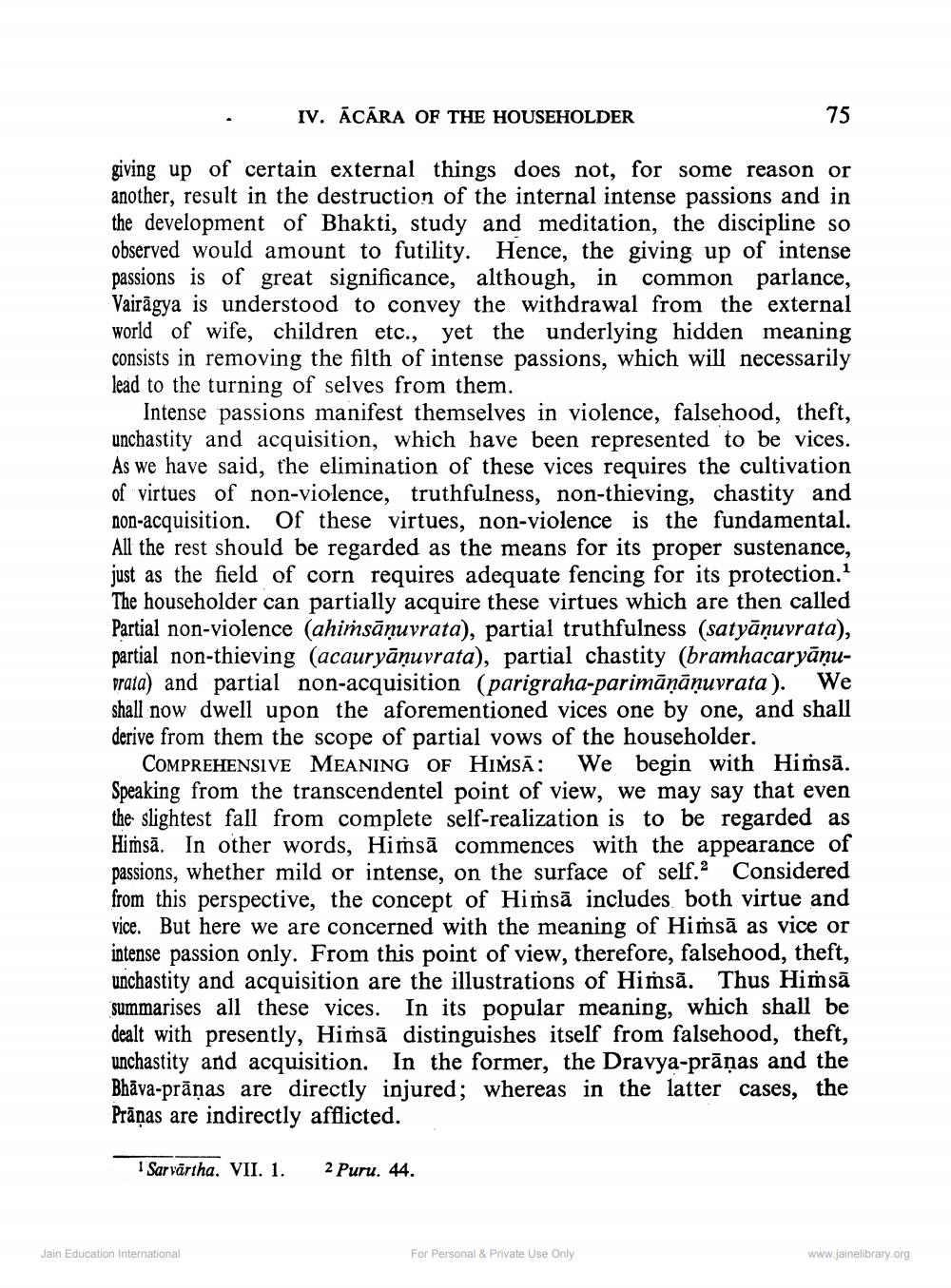________________
.
IV. ĀCĀRA OF THE HOUSEHOLDER
75
giving up of certain external things does not, for some reason or another, result in the destruction of the internal intense passions and in the development of Bhakti, study and meditation, the discipline so observed would amount to futility. Hence, the giving up of intense passions is of great significance, although, in common parlance, Vairāgya is understood to convey the withdrawal from the external world of wife, children etc., yet the underlying hidden meaning consists in removing the filth of intense passions, which will necessarily lead to the turning of selves from them.
Intense passions manifest themselves in violence, falsehood, theft, unchastity and acquisition, which have been represented to be vices. As we have said, the elimination of these vices requires the cultivation of virtues of non-violence, truthfulness, non-thieving, chastity and non-acquisition. Of these virtues, non-violence is the fundamental. All the rest should be regarded as the means for its proper sustenance, just as the field of corn requires adequate fencing for its protection. The householder can partially acquire these virtues which are then called Partial non-violence (ahiṁsānuvrata), partial truthfulness (satyāņuvrata), partial non-thieving (acauryāņuvrata), partial chastity (bramhacaryāņuvrata) and partial non-acquisition (parigraha-parimāņāņuvrata). We shall now dwell upon the aforementioned vices one by one, and shall derive from them the scope of partial vows of the householder.
COMPREHENSIVE MEANING OF HIŃSĀ: We begin with Himsā. Speaking from the transcendentel point of view, we may say that even the slightest fall from complete self-realization is to be regarded as Hiṁsā. In other words, Himsā commences with the appearance of passions, whether mild or intense, on the surface of self.? Considered from this perspective, the concept of Himsā includes both virtue and vice. But here we are concerned with the meaning of Himsā as vice or intense passion only. From this point of view, therefore, falsehood, theft, unchastity and acquisition are the illustrations of Hiṁsā. Thus Himsā summarises all these vices. In its popular meaning, which shall be dealt with presently, Himsā distinguishes itself from falsehood, theft, unchastity and acquisition. In the former, the Dravya-prāṇas and the Bhāva-prānas are directly injured; whereas in the latter cases, the Prāņas are indirectly afflicted.
1 Sarvartha. VII. 1.
2 Puru. 44.
Jain Education International
For Personal & Private Use Only
www.jainelibrary.org




